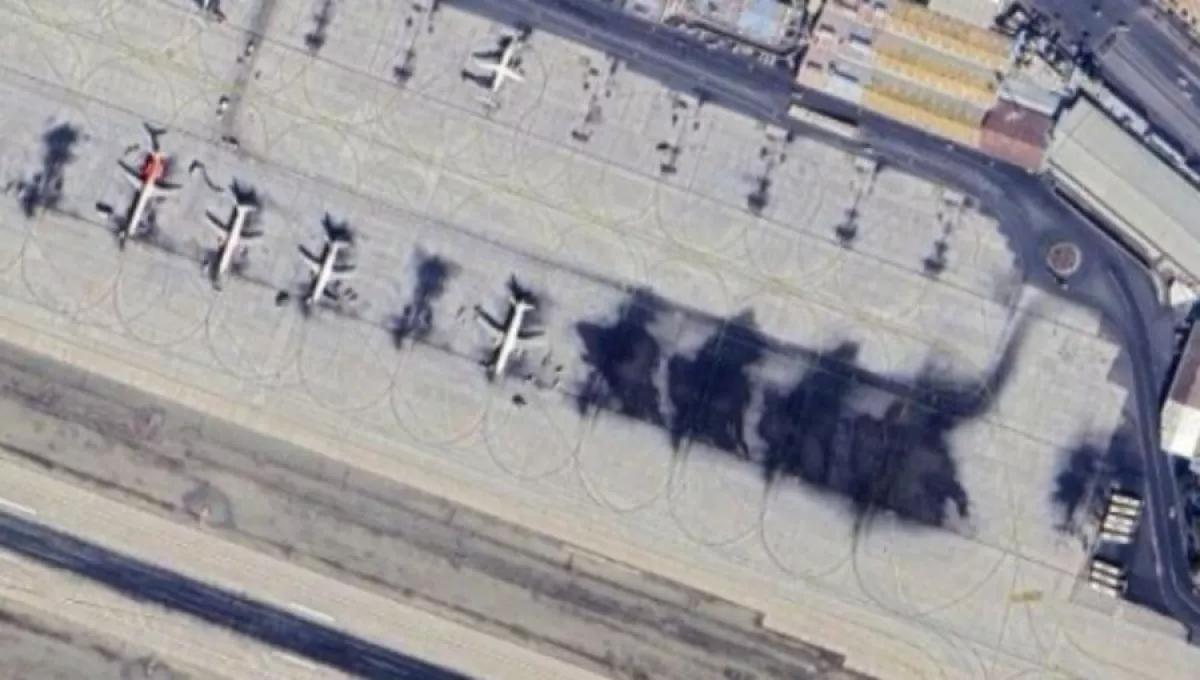How airlines adapt to constant geopolitical threats Navigating war zones
A glance at a global map showing real-time aircraft positions reveals not just the overwhelming number of planes in the sky, but also the vast, striking holes where no flights appear at all. These aerial gaps typically correspond to zones where threats on the ground make flying unsafe. The latest example is the intensifying conflict in the Middle East, which aviation analysts say is carving new holes into global flight paths — a development that’s forcing airlines to reroute or cancel flights, adding time and expense to operations.
Even when sitting many kilometres above the ground, sipping drinks and watching a movie in a pressurized cabin, passengers are not immune to events unfolding far below. Global travel has always been subject to geopolitics, but with war-related airspace disruptions becoming increasingly routine, airlines have been forced to adapt quickly to a changing and volatile reality.
Natural disasters can be just as problematic. A recent volcanic eruption near Bali, Indonesia, has again reminded carriers of nature’s ability to disrupt. “Airspace closures have become quite common,” said Brendan Sobie, a Singapore-based aviation consultant, featured in a recent CNN article.
“It’s almost like the new normal for airlines to have to navigate this kind of thing,” he added, pointing to incidents like flare-ups between India and Pakistan, last year’s strikes between Israel and Iran that have returned today on a much bigger scale, and the ongoing war in Ukraine as just some of the recent manmade causes of airspace disruption.
Live tracking services like FlightRadar24 reveal wide airspace voids over Israel, Iraq, Iran, and Ukraine, with similar gaps across parts of Africa. Commercial traffic is now being compressed into safe corridors around these areas.
According to the article, flights continue over Russian territory, though they’re primarily operated by Chinese carriers such as Air China, Xiamen Air, and Cathay Pacific, along with flights from neighbouring nations. Since the Ukraine war began in 2022, Russian airspace near the border has been closed to international traffic, pushing Chinese flights bound for Europe to routes passing near the Baltic Sea and St. Petersburg.
“Airlines have departments of people constantly looking at airspace issues and assessing risk,” Sobie explained, noting that different carriers apply varying criteria. “Even airspace that’s open, some airlines might deem it as not safe” and change their route accordingly, he said.
These detours often require significant deviation from usual flight paths. Pilots must keep well clear of danger zones to avoid being blown off course by bad weather or forced to land during emergencies in high-risk areas.


New challenges have emerged in modern warfare, too. Cyber threats like GPS jamming or spoofing near conflict zones have the potential to deceive satellite navigation systems, creating yet another layer of risk for commercial aviation.
Steep price of bypassing conflict zones
Every airline pays for disrupted routes, Tony Stanton, consultant director at Australia’s Strategic Air, told the publication. For instance, the Iran-Israel conflict is currently forcing airlines to extend flight times by two hours on routes such as London to Hong Kong.
Even fuel-efficient long-haul jets like the Boeing 777 or Airbus A350 consume much more fuel under such conditions. “To put that into perspective, whilst many factors affect fuel burn, a Boeing 777 burns around $7,000 per hour of fuel as a rough estimate,” Stanton explained.
Added fuel use isn’t the only cost. Airlines also face increased crew hours, extra fees for traversing alternative airspace, and potential revenue loss from delayed or canceled flights.
Those financial setbacks can’t be quickly recouped. Most travelers buy their tickets well before any conflict arises, locking in prices before airlines can adjust for the additional operating costs.
According to analysts, pricing future fares to reflect the new expenses is difficult, particularly when demand shifts after conflicts break out and alter travel patterns.
“The business of running a profitable airline is not easy,” Stanton observed.
Logistical considerations
With the current Middle East conflict grounding commercial flights to both Iran and Israel, airlines that previously flew over these countries are now diverting.
Sobie pointed out that short-haul flights between Central Asia and Gulf destinations like Dubai or Doha have been hit hardest in relative terms. “Those flights might have spent two hours of a three- or four-hour flight in Iranian airspace before the fighting began,” he said.
Many flights that once traversed the skies of Iran, Iraq, Jordan, or Israel now instead navigate over Saudi Arabia, Egypt, and Türkiye, Stanton noted.
“FlightRadar24 clearly shows how air traffic is currently being pressed into two narrow corridors, particularly a corridor to the south of the conflict zones.”
This has increased the burden on air traffic controllers, experts say, as more planes are packed into fewer lanes of airspace.
To help manage the congestion, adjustments are made to flight altitudes and departure times — but these too can drive up costs, especially with premium time slots for takeoff and landing at busy airports often carrying hefty price tags.
By Nazrin Sadigova








